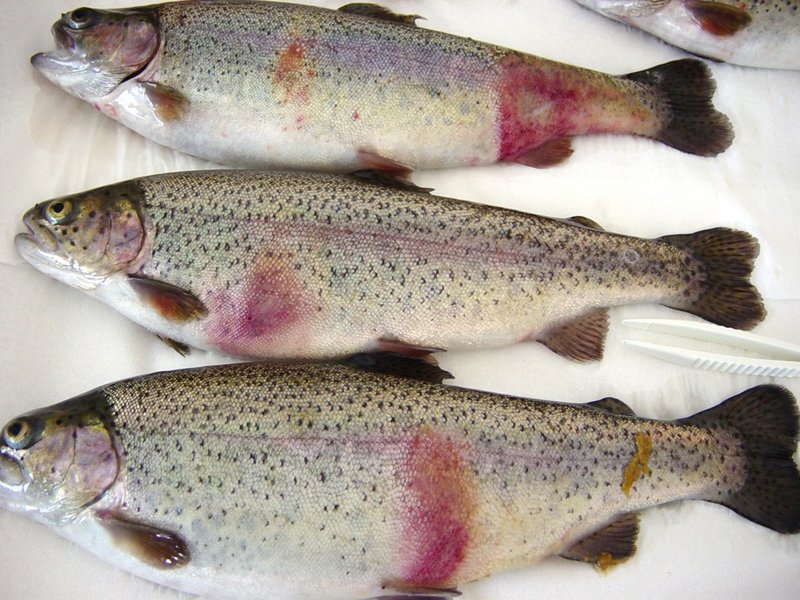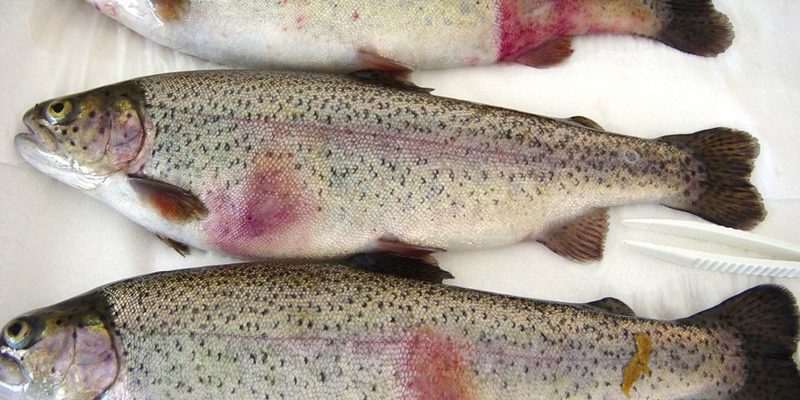
The health of trout is influenced by a variety of factors, including water quality, diet, and social interactions. Think of it this way: just like we need a balanced diet and clean living conditions, trout thrive best in stable environments where they’re not stressed or exposed to pathogens. This article dives into the common diseases that plague our finned friends and offers practical tips to keep them healthy. So grab your fishing gear or your fish tank filter, and let’s get into it.
Understanding the Health Risks for Trout
Trout are generally hardy fish, but they aren’t immune to diseases. Just as our bodies can succumb to illness when we’re under stress or not feeling well, trout can experience health issues triggered by environmental factors or pathogens. Various stressors like poor water quality, overcrowding, and sudden temperature changes can open the door for diseases to take hold.
Several types of pathogens can affect trout, including bacteria, viruses, fungi, and parasites. These dangers can cause anything from minor discomfort to severe illness or even death. It’s crucial to know what these diseases are and how they can affect your trout, especially if you’re running a trout farm or just trying to keep your aquarium fish happy.
Knowing what to watch for can arm you against potential outbreaks. You might be wondering how to spot the signs of illness. Well, let’s explore some common diseases that trout face and how to keep your aquatic pals swimming happily.
Common Bacterial Diseases in Trout
Bacterial infections are among the most common issues trout face. They can spread rapidly in crowded conditions and poor water quality. Here are a few you’ll want to keep an eye on:
- Columnaris Disease: Caused by the bacterium Flavobacterium columnare, this disease often manifests as gray or white patches on the skin and fins. It tends to thrive in warm water and poor oxygen conditions, making prevention key.
- Furunculosis: This is caused by Aeromonas salmonicida and often presents as skin ulcers and lumps on the fish. It can lead to systemic infections that are challenging to treat.
- Vibriosis: This disease is caused by Vibrio species and can lead to high mortality rates in infected fish. You’ll notice darkening of the skin and increased mortality, particularly in stressed trout.
Understanding these bacterial threats is crucial! Maintaining good water quality and avoiding overcrowding are essential preventive measures. If you notice any unusual symptoms, quick action can make all the difference.
Common Viral Diseases in Trout
Viral infections can be tricky because they often go unnoticed until it’s too late. Here are two of the most common viral diseases that affect trout:
- Infectious Hematopoietic Necrosis (IHN): This highly contagious virus can wipe out large populations of trout. Symptoms include lethargy, erratic swimming, and swollen bellies. Unfortunately, there’s no effective treatment, so prevention is vital.
- Viral Hemorrhagic Septicemia (VHS): Similar to IHN, VHS causes internal bleeding, and infected fish may display darkened skin and blood in their gills. Again, there’s no cure, making biosecurity a priority.
You might be wondering how to prevent these viral threats. The best solutions include maintaining a clean environment, buying healthy stock from reputable suppliers, and regularly monitoring your trout for any signs of illness.
Understanding Fungal Infections in Trout
Fungal infections might seem less frequent than bacterial or viral ones, but they can certainly cause problems, especially in stressed or injured trout. One of the most common fungal infections is:
- Saprolegniasis: This is caused by water molds that thrive in poor water conditions. Symptoms include fuzzy white patches on the body and fins. It’s a secondary infection that usually occurs after physical injury or stress.
To prevent fungal infections, maintain excellent water quality and avoid injuries through careful handling. Cleaning your aquarium or hatchery regularly will help keep fungal growth at bay, ensuring your trout stay healthy and vibrant.
Common Parasitic Diseases in Trout
Parasites can be the silent killers lurking in your aquarium or pond. Some of the most common parasitic diseases include:
- Ichthyophthirius multifiliis (Ich): Known simply as “Ich,” this parasite manifests as white cysts on the skin, gills, and fins of the trout. It can cause scratching behavior and eventual death if left untreated.
- Trichodiniasis: Another harmful parasite, Trichodinids can create lesions on the skin, leading to behavior changes and stress. It’s a significant issue in crowded conditions.
You might wonder how to get rid of these pesky parasites. Treatment often involves raising water temperatures (if the fish can tolerate it) and using medicated treatments. However, the real key is prevention! Regularly checking your trout for signs of stress or unusual behavior can save you lots of trouble down the road.
The Role of Water Quality in Trout Health
Water quality is like the foundation of a house; without a solid base, everything crumbles. Trout require specific conditions to thrive, including appropriate temperature, pH, and oxygen levels.
You can measure these parameters using aquarium test kits or pH meters. Here’s a checklist for keeping your water pristine:
- Maintain a suitable temperature range (usually 50°F to 65°F for many trout species).
- Keep pH between 6.5 and 8.5.
- Ensure oxygen levels are above 5 mg/L.
Regular water changes, using good filters, and minimizing waste will help maintain these crucial conditions. You might also consider investing in aeration devices to keep oxygen levels up during warmer months.
Feeding and Nutrition Tips for Healthy Trout
Feeding your trout a balanced diet is essential to keep them strong and disease-free. Poor nutrition can make them more susceptible to illnesses, just like a lack of vitamins can lead to health problems in humans. Here are some tips to ensure your trout get the best diet:
- Choose high-quality pellets: Look for feeds that meet the specific nutritional needs of trout. These usually contain protein, fats, vitamins, and minerals.
- Incorporate live food: Whenever possible, supplement their diet with live foods like worms or insects. They not only offer variety but also encourage natural behaviors.
- Avoid overfeeding: This can lead to poor water quality, which in turn can lead to disease. Feed small amounts that they can consume in a few minutes.
The right nutrition can significantly bolster their immune systems and help them resist diseases. Just remember, a healthy trout is a happy trout!
Monitoring and Early Detection of Illness
The earlier you catch a problem, the better the chances of recovery. Regular monitoring is key. Here’s how to keep an eye on your trout:
- Watch for changes in behavior: If your trout start swimming oddly or hiding more than usual, take notice.
- Check for physical signs: Look for lesions, discoloration, or other unusual marks on their bodies or fins.
- Keep records: Documenting observations can help you identify patterns or recurring issues over time.
If you see signs of illness, act quickly! Quarantining infected fish can prevent a larger outbreak.
In conclusion, keeping trout healthy is a rewarding journey that requires observation, care, and proactive measures. By understanding common diseases, maintaining excellent water quality, providing proper nutrition, and monitoring your fish closely, you can help ensure that your trout thrive for years to come. Whether it’s for sport or pleasure, healthy trout make for a happy hobby. So, enjoy your time with these beautiful fish, and remember, a little prevention goes a long way!

